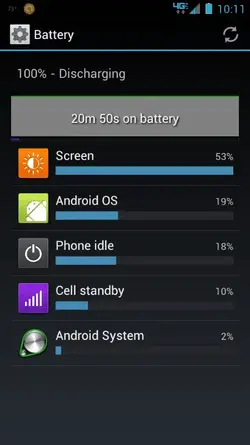I have been loving my pricey new Droid Razr Maax. I recently upgraded from a Droid X2. With the exception of this odd issue, the battery life has been great, however...
I am a private pilot. On four occasions now I have flown with my MAAX and when I got down the battery was totally drained. DOA. Kaput.
So, I figured it must be that I was high in the air and the phone went into roaming mode and the battery drained. That's what I figured the first couple of times it happened and I was making longer trips at altitudes >5,000 ft.
But, last weekend, I made a short hop at a low altitude, about 1,500 feet AGL. I flew over the Mississippi river and wanted to use the camera, but the phone was now dead. At this point I couldn't have been in the air more than eight or ten minutes. It didn't make sense that it drained so fast. The other crazy thing was the phone was cool to the touch. All my other experiences with rapid discharge of batteries has been that the device generated a great amount of heat.
More crazy stuff to follow.
When I got on the ground for breakfast at a neighboring airport, I plugged my dead phone into a charger. I got the usual battery charging icon that said the battery was <5% charged. The screwy thing was, I checked on it about 30 minutes later and it was apparently fully charged!.. I would expect a dead phone to charge up in three or four hours. Not 30 minutes.
At this point the phone seemed fine and fully charged. I resolved to remind myself to always turn the thing off before aviating. Naturally, 15 minutes later, when I departed to head home I forgot to turn the phone off. I guess I better incorporate it in my engine pre-start checklist.
My destination was literally 5 minutes away from the time I lifted off. (my aircraft cruises at 170 mph). Let's say 6 minutes in the air, allowing time for the landing phase. I wasn't any higher than 1,000 feet agl. On landing the phone was completely dead, and was cool to the touch.
The following Monday I called Verizon, and explained the problem, much as I explained it here. They didn't know what to make of it, so they sent me a replacement phone. A replacement phone with an intermittent speaker (addressed in another thread).
So, what do you guys think? What killed the battery so fast?
Sam
I am a private pilot. On four occasions now I have flown with my MAAX and when I got down the battery was totally drained. DOA. Kaput.
So, I figured it must be that I was high in the air and the phone went into roaming mode and the battery drained. That's what I figured the first couple of times it happened and I was making longer trips at altitudes >5,000 ft.
But, last weekend, I made a short hop at a low altitude, about 1,500 feet AGL. I flew over the Mississippi river and wanted to use the camera, but the phone was now dead. At this point I couldn't have been in the air more than eight or ten minutes. It didn't make sense that it drained so fast. The other crazy thing was the phone was cool to the touch. All my other experiences with rapid discharge of batteries has been that the device generated a great amount of heat.
More crazy stuff to follow.
When I got on the ground for breakfast at a neighboring airport, I plugged my dead phone into a charger. I got the usual battery charging icon that said the battery was <5% charged. The screwy thing was, I checked on it about 30 minutes later and it was apparently fully charged!.. I would expect a dead phone to charge up in three or four hours. Not 30 minutes.
At this point the phone seemed fine and fully charged. I resolved to remind myself to always turn the thing off before aviating. Naturally, 15 minutes later, when I departed to head home I forgot to turn the phone off. I guess I better incorporate it in my engine pre-start checklist.
My destination was literally 5 minutes away from the time I lifted off. (my aircraft cruises at 170 mph). Let's say 6 minutes in the air, allowing time for the landing phase. I wasn't any higher than 1,000 feet agl. On landing the phone was completely dead, and was cool to the touch.
The following Monday I called Verizon, and explained the problem, much as I explained it here. They didn't know what to make of it, so they sent me a replacement phone. A replacement phone with an intermittent speaker (addressed in another thread).
So, what do you guys think? What killed the battery so fast?
Sam

